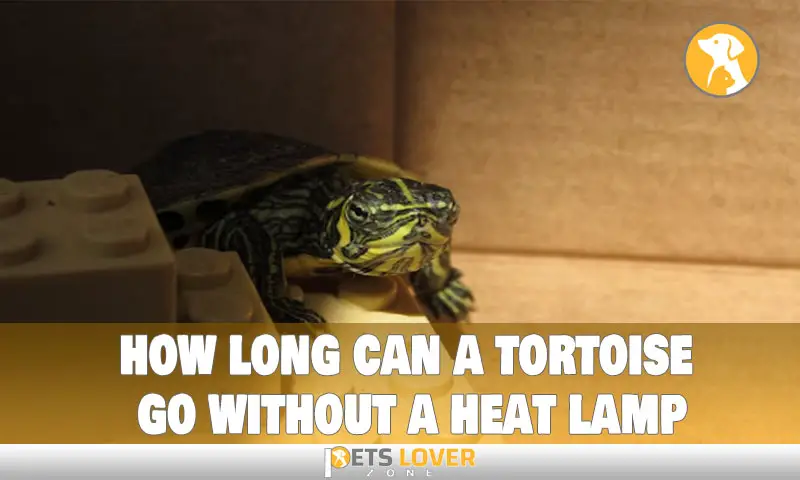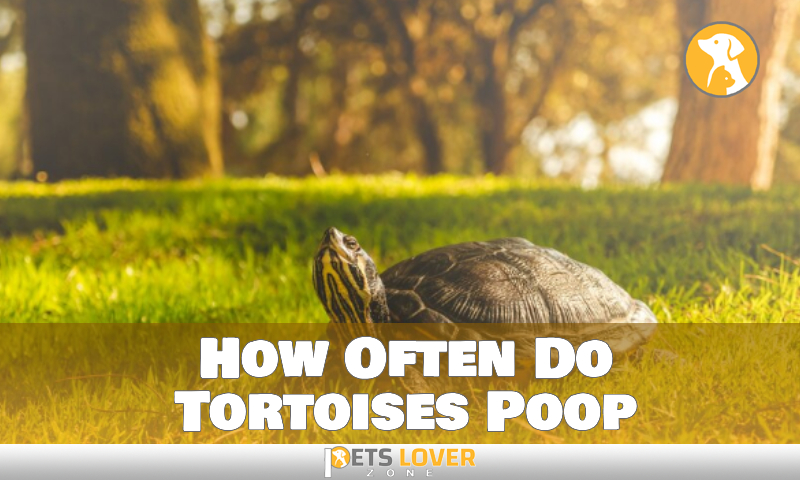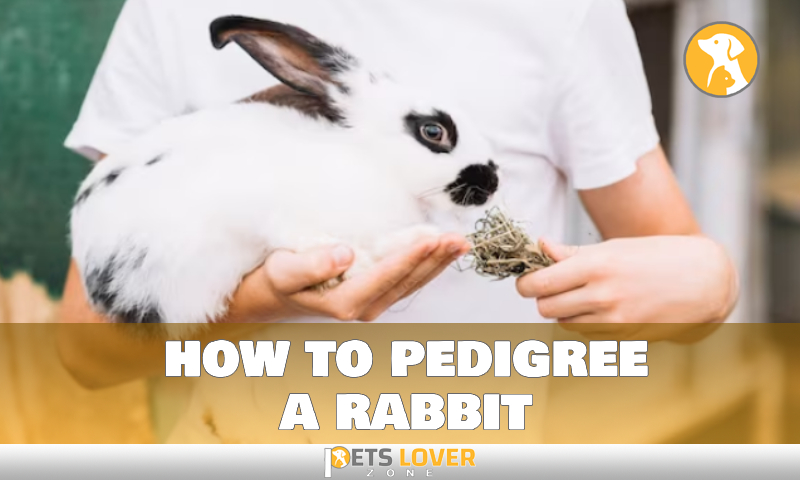A tortoise can go without a heat lamp for up to five to six hours. Tortoises are cold-blooded animals that rely on external heat sources to maintain their body temperature.
Without a heat lamp, their body temperature can drop, affecting their metabolism and overall health. Therefore, it is important to provide a heat lamp for tortoises to create a suitable environment that mimics their natural habitat. The heat lamp helps regulate the tortoise’s body temperature, allowing them to digest food properly, move around, and remain active.
It also helps prevent health issues such as respiratory infections, shell rot, and metabolic bone disease. Providing a heat lamp for your pet tortoise is crucial to ensuring their well-being and longevity.
Understanding The Ideal Temperature For Tortoises

Importance Of Maintaining The Right Temperature For Tortoises
Tortoises are cold-blooded reptiles, which means that they rely on external sources to regulate their body temperature. Without the right temperature, tortoises can suffer from a variety of health issues, including metabolic disorders, poor digestion, and even death. It is crucial for tortoise owners to understand the importance of maintaining the right temperature for their pets to ensure their well-being.
Here are the key points to consider:
- Tortoises require a thermal gradient in their enclosure, which means they need access to both a warm and a cool side. This allows them to move between different temperature zones based on their needs.
- Heat is essential for promoting proper digestion and metabolism in tortoises. If the temperature falls below their ideal range, their digestion can slow down, leading to issues such as impaction.
- A heat lamp or basking spot is necessary to provide the warm side of the enclosure. This will allow the tortoise to bask and absorb heat, which is vital for maintaining its body temperature.
- It is important to regularly monitor the temperature in the enclosure to ensure it stays within the recommended range. Using a thermometer or temperature gun can help owners accurately measure the temperature.
- Avoid relying solely on ambient room temperature to provide warmth for the tortoise. Room temperatures can fluctuate, and without a specific heat source, the tortoise may not receive adequate heating.
Factors That Affect The Ideal Temperature For Tortoises
Several factors influence the ideal temperature for tortoises. It’s essential to consider these factors to create a suitable environment for your pet.
Here are the key points to consider:
- Tortoise species: Different tortoise species have different temperature requirements. For example, desert species like the sulcata tortoise thrive in higher temperatures compared to forest-dwelling species like the red-footed tortoise.
- Natural habitat: Understanding the natural habitat of your tortoise species can provide valuable insights into their temperature preferences. Mimicking their natural environment can help keep them healthy and comfortable.
- Size and age: Smaller and younger tortoises may require slightly higher temperatures as they have less body mass to retain heat. Larger tortoises may require a larger heat source to adequately warm their enclosure.
- Time of day and season: In the wild, tortoises experience temperature fluctuations throughout the day and seasons. Adjusting the temperature in their enclosure to mimic these natural fluctuations can help support their natural rhythms.
- Humidity levels: In addition to temperature, humidity also plays a role in creating the ideal environment for tortoises. Some species require higher humidity levels, while others prefer drier conditions.
Optimal Temperature Range For Different Tortoise Species
Different tortoise species have specific temperature requirements to thrive and stay healthy. It is crucial to understand the optimal temperature range for your specific tortoise species to provide the best care possible.
Here are the key points to consider:
- Mediterranean tortoises: Species like Hermann’s tortoise and Greek tortoise thrive in temperatures ranging from 75°f to 85°f (24°c to 29°c) during the day and can tolerate slightly cooler temperatures at night.
- Desert tortoises: Desert-dwelling species such as the desert tortoise and Egyptian tortoise prefer higher temperatures, ranging from 85°f to 95°f (29°c to 35°c) during the day and dropping to the mid-70s°f (low 20s°c) at night.
- Tropical tortoises: Tortoises like the red-footed tortoise and yellow-footed tortoise prefer warmer temperatures, ranging from 80°f to 90°f (27°c to 32°c) during the day and around 75°f (24°c) at night.
- Hibernating tortoises: Some tortoise species, such as the Russian tortoise and Mediterranean tortoises, hibernate during the winter months. During this period, they require cooler temperatures ranging from 40°f to 60°f (4°c to 15°c).
By understanding the importance of maintaining the right temperature for tortoises, considering the factors that affect their ideal temperature, and providing the optimal temperature range for their species, you can ensure a comfortable and thriving environment for your tortoise companion.
Remember, regular monitoring and adjustments are necessary to meet their changing needs throughout the day and across seasons.
The Effects Of Cold Climates On Tortoises

Tortoises, known for their slow and steady nature, have adapted to long lives in warm climates. However, what happens when these resilient creatures are exposed to cold temperatures? We explore the effects of cold climates on tortoises, including the impact on their health and behavior, the risks associated with low temperatures, and the physiological changes they undergo during cold weather.
How Cold Climates Impact Tortoises’ Health And Behavior
- Tortoises rely on external sources of heat, such as sunlight, to regulate their body temperature. When exposed to cold climates, their ability to thermoregulate is compromised.
- Cold temperatures can slow down a tortoise’s metabolism, leading to reduced activity levels and decreased appetite.
- Prolonged exposure to cold climates can weaken a tortoise’s immune system, making them more susceptible to infections and diseases.
- Tortoises may exhibit signs of stress and discomfort in cold climates, showcasing behaviors like hiding, shivering, or attempting to burrow deeper into their habitat.
Risks Associated With Exposing Tortoises To Low Temperatures
- Prolonged exposure to cold temperatures can lead to hypothermia in tortoises, which is a life-threatening condition characterized by a dangerously low body temperature.
- Tortoises may suffer from respiratory illnesses, such as pneumonia, when exposed to cold and damp environments for an extended period.
- The risk of dehydration increases due to reduced water intake in colder temperatures, as tortoises tend to drink less in cooler weather.
- The growth rate of young tortoises can be stunted if they are not provided with the correct temperature conditions, leading to health issues in the long run.
Physiological Changes In Tortoises During Cold Weather
- Tortoises exhibit a phenomenon called brumation, which is similar to hibernation in mammals. During bruising, their metabolism and activity levels decrease to conserve energy.
- When temperatures drop, tortoises release stress hormones that help them cope with the physiological changes occurring in their bodies.
- To survive the cold, tortoises may dig burrows, seeking refuge in deeper, warmer areas of the ground.
- Some tortoises, like the Russian tortoise, have developed thicker shells to provide insulation against colder temperatures.
Understanding the effects of cold climates on tortoises is crucial for their well-being. By creating the right environmental conditions and providing proper heat sources, tortoise owners can ensure their reptile companions remain healthy and comfortable even in colder climates. Remember, tortoises may be slow, but their health should never be compromised.
Assessing The Tolerance Of Tortoises To Cold Temperatures
Tortoises are fascinating creatures that possess unique adaptations to survive in a wide range of environments. One of the crucial factors that determines their ability to thrive is their tolerance to cold temperatures. Assessing this tolerance is essential for ensuring the well-being of pet tortoises in our care.
In this section, we will explore the various factors that influence the cold tolerance of tortoises, how they acclimate to changing temperatures, and the signs of discomfort or distress they may exhibit in cold climates.
Factors That Determine The Cold Tolerance Of Tortoises:
- Species: Different tortoise species have varying levels of cold tolerance. For example, desert-dwelling tortoises, like the sulcata tortoise, exhibit a higher tolerance to heat but struggle in colder temperatures.
- Geographic origin: Tortoises native to colder regions, such as the Russian tortoise, naturally possess better cold tolerance than those originating from warmer climates.
- Size and age: Larger tortoises typically have higher cold tolerance than smaller ones. Similarly, adult tortoises are better equipped to withstand colder temperatures compared to juveniles.
- Health and condition: Tortoises in good health with proper nutrition and hydration are generally more resilient to cold temperatures.
How Tortoises Acclimate To Changing Temperatures:
- Behavioral adaptations: Tortoises have the ability to adjust their behavior in response to temperature changes. They may bask in the sun during the day to raise their body temperature or seek shelter in cooler areas when it gets too hot.
- Physiological mechanisms: Tortoises can regulate their body temperature to some extent through physiological mechanisms. They may alter their metabolic rate or adjust blood flow to different body parts in order to maintain a stable internal temperature.
Signs Of Discomfort Or Distress In Tortoises Due To Cold Climates:
- Sluggishness: Tortoises may exhibit reduced activity levels or move more slowly when they are uncomfortable in colder temperatures.
- Inactivity or hiding: If tortoises feel too cold, they may become inactive, retreat into their hideouts, or bury themselves in the ground to find a warmer spot.
- Shell discoloration and pyramiding: Prolonged exposure to cold temperatures can cause discoloration of the tortoise’s shell and lead to the development of pyramiding, an abnormal growth pattern.
Understanding the factors that determine cold tolerance, how tortoises acclimate, and recognizing signs of discomfort or distress due to cold climates are all crucial in providing appropriate care for tortoises. By ensuring they are kept in suitable conditions, we can help these amazing creatures thrive and stay healthy.
Providing Heat For Tortoises
The Role Of Heat Lamps In Creating A Suitable Environment For Tortoises
Tortoises are cold-blooded creatures, which means they rely on their environment to regulate their body temperature. In the wild, they can move around to find sunny spots or burrow into the ground to escape excessive heat. However, when kept as pets, they rely on their owners to provide the necessary heat for their well-being.
This is where heat lamps come into play.
- Heat lamps are essential in creating a suitable environment for tortoises, as they mimic the warmth of the sun.
- They provide the necessary heat for tortoises to efficiently metabolize food, maintain optimal body functions, and even support their overall growth and development.
Importance Of Providing Supplemental Heat During Colder Periods
Even though tortoises are resilient and can tolerate colder temperatures to some extent, it’s crucial to provide supplemental heat during colder periods, especially if they are kept indoors or in cooler climates. Here’s why:
- Colder temperatures can significantly affect tortoises’ metabolism and digestion, leading to health issues.
- Lack of heat can compromise their immune system, making them more susceptible to diseases and infections.
- Supplemental heat helps maintain the tortoise’s activity levels and overall well-being during colder periods.
Selecting The Right Heat Lamp And Setting Up A Heating System For Tortoises
When it comes to selecting the right heat lamp and setting up a heating system for your tortoise, there are a few factors to consider:
- Choose a heat lamp specifically designed for reptiles, ensuring it emits enough heat and the right amount of light.
- Position the heat lamp at a suitable distance from the tortoise’s basking spot to provide a warm and comfortable environment without the risk of overheating.
- Set up a thermostat to regulate the temperature and prevent any fluctuations that may harm your tortoise.
- Consider using ceramic heat emitters or under-tank heaters as additional heating sources to create a more balanced heat gradient in the tortoise’s enclosure.
Providing the appropriate heat for your tortoise is vital for its overall health and well-being. By understanding the role of heat lamps, recognizing the importance of supplemental heat during colder periods, and selecting the right heating system, you can ensure that your tortoise stays comfortable and thrives in its environment.
The Maximum Time Tortoises Can Survive Without A Heat Lamp
Tortoises are fascinating creatures that have adapted to various environments, including those with colder temperatures. However, it is important to understand the limits of their cold tolerance and how long they can go without a heat lamp. We will explore the maximum time tortoises can survive without a heat lamp and delve into the factors that influence their ability to withstand colder conditions.
Additionally, we will provide practical recommendations for ensuring the well-being of tortoises during colder periods.
Understanding The Limits Of Tortoises’ Cold Tolerance
Tortoises are ectothermic animals, meaning that they rely on external sources to regulate their body temperature. While some species are more cold-tolerant than others, it is crucial to acknowledge that all tortoises have thresholds when it comes to temperature fluctuations.
Here are some key points to consider:
- Tortoises require a specific range of temperatures to function optimally, typically between 75-85°f (24-29°c).
- Prolonged exposure to colder temperatures can lead to stress, decreased immune function, and other health issues in tortoises.
- Tortoises have varying levels of cold tolerance depending on their species, habitat, and evolutionary adaptations.
Factors That Influence A Tortoise’S Ability To Survive Without Heat
The ability of a tortoise to survive without a heat lamp for an extended period depends on several factors. Understanding these factors can help you make informed decisions regarding your tortoise’s care. Consider the following points:
- Species: Different tortoise species have varying levels of cold tolerance. For example, desert-dwelling tortoises are generally more resistant to colder temperatures.
- Size: Smaller tortoises tend to lose body heat faster than larger ones. This means that smaller individuals may have a more limited ability to withstand colder conditions.
- Acclimatization: Tortoises that have been acclimated to colder temperatures gradually over time may develop better cold tolerance compared to those that haven’t.
Practical Recommendations For Ensuring Tortoises’ Well-Being During Colder Periods
Taking appropriate measures to safeguard your tortoise’s well-being during colder periods is crucial for their health and happiness. Here are some practical recommendations to consider:
- Provide a suitable indoor enclosure: If temperatures drop below the recommended range for your tortoise, ensure they have access to a warm indoor enclosure with a heat lamp.
- Use temperature monitoring devices: Utilize thermometers and thermostats to monitor and regulate the temperature within your tortoise’s habitat.
- Offer additional heat sources: Supplemental heat sources like heat pads or ceramic heat emitters can provide additional warmth during colder periods.
- Create a warm microclimate: Arrange heat lamps and basking spots in a way that creates warm areas within your tortoise’s enclosure for them to thermoregulate effectively.
- Consult a reptile veterinarian: If you have concerns about your tortoise’s ability to tolerate colder temperatures or their overall health during colder periods, seek advice from a reptile veterinarian.
By understanding the limits of tortoises’ cold tolerance, considering the factors that influence their ability to survive without a heat lamp, and following practical recommendations, you can ensure the well-being of your tortoise during colder periods. Remember, providing a suitable environment is crucial for their overall health and longevity.
Strategies For Protecting Tortoises In Cold Climates
Tortoises are fascinating creatures and make great pets for reptile enthusiasts. However, if you live in a cold climate, it’s important to take extra precautions to ensure the well-being of your beloved tortoise. In this section, we will discuss some effective strategies for protecting tortoises in cold climates.
Creating Appropriate Shelter To Protect Tortoises From Low Temperatures
- Provide a spacious and well-insulated enclosure for your tortoise to retreat to when temperatures drop. This can be a heated indoor space or an outdoor enclosure with a heated shelter.
- Insulate the enclosure using materials like foam insulation boards or even hay bales around the edges to prevent cold drafts from entering the enclosure.
- Use a quality heat lamp to create a warm spot in the enclosure where your tortoise can bask when necessary. Ensure that the heat lamp is securely installed to avoid accidents.
Supplementing Natural Heat Sources To Aid Tortoises’ Survival
- If your tortoise’s enclosure receives direct sunlight, ensure that it has access to a sunny area during the day. Sunlight is a natural and effective heat source for tortoises.
- Consider using heat mats or heat rocks specifically designed for reptiles. These can be placed inside the enclosure to provide additional warmth, especially during colder nights.
- Utilize ceramic heat emitters or radiant heat panels to provide a gentle and consistent heat source without emitting visible light, which can disrupt your tortoise’s natural sleep patterns.
Implementing Strategies To Maintain A Consistent Temperature For Tortoises
- Use a thermostat to regulate the temperature inside the enclosure. This will ensure that the temperature remains within the optimal range for your tortoise’s specific species.
- Monitor the temperature regularly to ensure it stays consistent throughout the day and night. Fluctuating temperatures can be stressful for tortoises and may compromise their health.
- Consider using a timer for the heat lamps or other heating devices to mimic the natural day-night cycle. This can help maintain a consistent temperature and promote a healthy routine for your tortoise.
Remember, tortoises are ectothermic creatures, meaning they rely on external sources of heat to regulate their body temperature. By following these strategies, you can create a comfortable and safe environment for your tortoise, even in colder climates.
FAQs
How Long Can A Tortoise Survive Without A Heat Lamp?
Tortoises can survive for a short period without a heat lamp, but it’s essential for their overall health and well-being.
What Happens If A Tortoise Doesn’t Have A Heat Lamp?
Without a heat lamp, a tortoise may suffer from decreased appetite, sluggishness, and even potential health issues.
How Does A Heat Lamp Benefit A Tortoise?
A heat lamp provides the necessary warmth for a tortoise’s digestion, metabolism, and overall activity level.
Can A Tortoise Be Kept Warm Without A Heat Lamp?
While alternative heating methods like ceramic heat emitters or under-tank heating pads can be used, a heat lamp is the most common and effective way to keep a tortoise warm.
Conclusion
It is crucial to provide proper heating conditions for your pet tortoise to ensure its health and well-being. Tortoises rely on external sources of heat to regulate their body temperature, and without a heat lamp, they can suffer from metabolic issues and compromised immune systems.
The specific duration that a tortoise can go without a heat lamp depends on several factors, including species, age, and ambient temperature. However, to maintain optimal health, it is best to provide a consistent heat source for your tortoise at all times.
Remember to monitor the temperature regularly, ensuring that it falls within the recommended range for your tortoise’s specific needs. By providing a suitable heat lamp, you are creating a comfortable and safe environment for your pet tortoise to thrive and live a long and healthy life.





